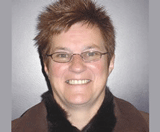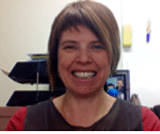Otago and Southland regional story (archived)
This 'slice of action' comes from the Otago/Southland region. Two main themes are evident: clarifying vision, principles, values and key competencies, and the importance of including staff in the discussions about developing a school's curriculum.
Interview with Kate Rice, School Support Services, Otago/Southland region
Kate Rice is one of the advisers guiding school leaders as they establish learning communities throughout Otago and Southland to collaborate on curriculum implementation.
The University of Otago's School Support Services have organised half-day workshops for sector leaders, followed by activities such as visits to schools involved in the 100 sector leaders project. They are also running a series of short workshops on the key competencies throughout the region.
This approach aims to strengthen the learning network as leaders access information from a wide range of sources, and have time to share their expertise and experiences. Some of the schools in the region have been at the forefront of curriculum development and have valuable insights to share.
We have had some principals leading workshops on curriculum design because they have been experimenting with techniques themselves, but they have also been using the readings we have provided and are sharing them with other principals who are interested.
The Otago and Southland advisers have focused on helping sector leaders come to grips with the intent of the document outlined in the vision, principles, values, and key competencies. Kate wants to stimulate thinking and discussion about these aspects of The New Zealand Curriculum. She says she is pleased that schools are engaging with the big picture thinking and that each wants to come to terms with what this means for their practice.
A number of the region's secondary schools are trialling different approaches to curriculum design. It is interesting that some of these initiatives are challenging conventional school timetables.
Kate says one of the challenges advisers face is engaging with schools that have decided 'we already do all that', and that The New Zealand Curriculum means business as usual. She hopes all schools will take this opportunity to revisit their school curriculum, and she encourages school leaders to actively involve their staff in discussions about curriculum design.
Interview with Robyne Selbie, sector leader, Dunedin
Robyne Selbie is the Principal of Port Chalmers School in Dunedin, a full primary school set beside the idyllic Otago harbour.
Robyne is one of the sector leaders chosen to help schools implement The New Zealand Curriculum as part of the 100 sector leader project.
The strength of this learning network lies in the fact that the principals are already used to working together. The group is further strengthened by sharing a common purpose: to understand the intent of the new curriculum and how it might look in each school. All the schools involved are at different stages of curriculum implementation. Each time the group has met, people have shared their stories allowing schools to hook into existing expertise.
I think the thing that has been really pleasing is the willingness of people to come and get involved.
To begin with, the group brainstormed the concerns and interests of the group as they read The New Zealand Curriculum. They used the 'Opportunities and challenges' strategy designed by Julia Atkin to help with this process.
They agreed that developing a vision was a good starting point. Then they focused on ways schools are currently meeting the requirements of The New Zealand Curriculum.
On the whole people are really pulling the threads together at this point in time. Some of the schools are sharing their consultation models. It is encouraging that the principals are keen to get the foundations set before moving on.
One of the challenges the group faces is that schools are at different stages of curriculum implementation. Robyne emphasised the need to design a programme that has '... the flexibility to meet the needs of schools at particular points in time'.
Support for sector leaders comes from various sources. The University of Otago School Support Services in Dunedin has held several training days and compiled and shared resources. The sector leaders have had opportunities to spend time together and discuss their programmes. They have made good use of the implementation pack for schools sent out by the Ministry of Education, the NZCER Kick starts and the wealth of resources available on New Zealand Curriculum Online.
In addition, Robyne has drawn on resources she gathered during her time in an ICT PD cluster. She made special mention of the New Zealand Curriculum design and review chart, included in the implementation pack for schools sent out in February this year. The cluster has used it as a framework and as a time-line for implementation planning. Robyne suggested it would be valuable to share curriculum design and review charts among schools.
Interview with Vicki Nicolson, classroom teacher, Dunedin
Vicki Nicolson is deputy principal and a full-time classroom teacher at Port Chalmers School in Dunedin.
Vicki's school is part of the 100 sector leader project looking at the implementation of The New Zealand Curriculum.
This involvement and the fact that their principal is a sector leader means Port Chalmers School is well positioned to lead curriculum implementation from the front. The staff are able to continue their professional dialogue about what The New Zealand Curriculum might look like in classrooms, and to examine their current practice. This focus is important to ascertain what to retain and what to discard, before adding anything new to classroom practice.
The biggest thing is The New Zealand Curriculum has affirmed the direction we are taking in our school with inquiry-based learning and giving students voice; and has given us permission to keep going.
Vicki introduced her year 7-8 class to The New Zealand Curriculum during the first week of school this year.
We did an exercise where we talked about the sorts of things we want to know, what questions we have about ourselves, what questions we have about our world and how does that fit with The New Zealand Curriculum.
One student said to me, "No one has ever asked me what I wanted to learn before."
I am talking to the students constantly about - how are you showing you are relating to others? How are you managing self? They have looked at the key competencies. They have made 'Y' charts to unpack each key competency. They have made two goals around the key competencies. The language is up on the walls. We are constantly talking about what are those things, what do they look like for us, why are they important? We even unpacked the word 'competency' and one of the kids came up with the word "dispositions" using a thesaurus and we agreed the key competencies were dispositions for life and for learning. And so that is what I keep talking about. What dispositions do you need, what key competencies do you need?
Vicki explained that she would not have been comfortable sharing the old curriculum documents with her class, but finds the new curriculum a much more 'kid friendly' document.
When asked how learning and teaching might look using The New Zealand Curriculum, Vicki discussed the strong emphasis on learning and teaching. The curriculum gives her permission to focus more on how students learn, while still keeping the importance of what students learn as a strong focus.
Vicki says that one of the real challenges is finding time to explore and try new ideas. However, because she can see that this will make a difference to her students, she is happy to confront the challenge. Her main focus is to make sure she understands the intent of the document, and that she is able to translate this into classroom practice for the benefit of her students.
I am so excited about this new curriculum. I just think it gives power to the learner and to parents and schools to make decisions about what is useful learning for their kids." Authentic learning - that's what The New Zealand Curriculum allows us to engage in. It was there in the old curriculum but is really at the forefront now.



